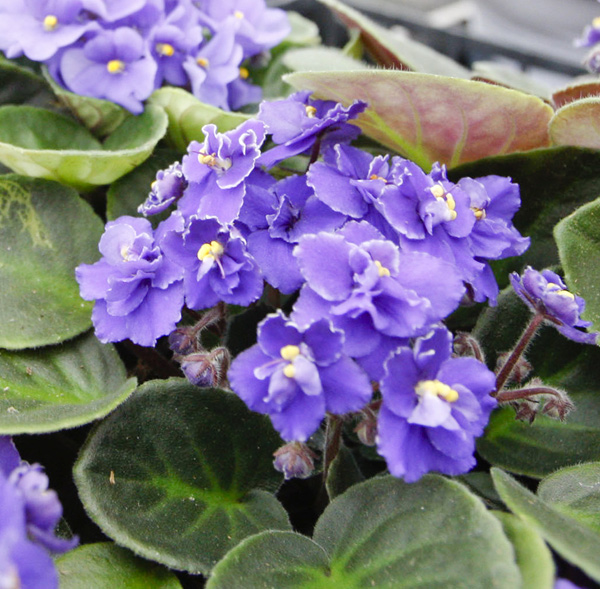African violets


African Violets
By PAM BAYTOS
OSU Extension master gardener volunteer
It’s time to get reacquainted with the beautiful purple flowers that your grandmother used to grow.
The African violet, known botanically as Saintpaulia, is a favorite flowering houseplant as it adapts well to limited space and growing conditions. Flowers come in blue, lavender, pink, red and white as well as bi-colored. Flower shapes also vary from single, star-shaped, to double, fringed and ruffled.
You need to provide adequate light for your African violet. Light is the most important factor in promoting flowering. Pinch off spent blossoms and blossom stems to encourage development of new blooms.
Place plants near any window that has bright, but filtered light. An east window is best because it gets morning sun. A thin curtain will be necessary if placing plants in south or west windows. In order to maintain a nice shape, plants must be turned a quarter turn every week.
Water your violets at the right times. Overwatering is the number one killer of these plants. Violet soil should be kept evenly moist at watering and never allowed to become soggy. Water only when the top of soil is dry to the touch. Always use tepid water. Avoid using highly chlorinated water by pouring water into a container and letting it stand overnight to allow chlorine gas to escape. Also avoid using soft water as this increases the salt content. You can water from top, bottom, use wicks or self-watering planters. About once a month, however, plants should be watered from the top to flush out accumulated fertilizer salts. Never allow the plant to stand in water. If water gets on leaves, dry with a paper towel to prevent leaf spotting.
Your potting medium should be sterilized and light and airy to allow root penetration. Soil-less mixes are ideal as they contain sphagnum peat, vermiculite and perlite.
Temperature and humidity are important factors. Most violets can tolerate temperatures between 60 and 80 degrees. The preferred humidity range is 40 to 60 percent. A humidifier or bowl of water placed near plants can be used to increase humidity this time of year.
Lack of regular feeding is one of the reasons African violets will not bloom. The best way to feed is to use a diluted fertilizer every time you water. Use 1/8 to 1/4 teaspoon fertilizer to one gallon of water, but be sure to follow label directions. A balanced fertilizer such as a 20-20-20 or 12-36-14 is best.
African violets are easily propagated by division, but the most trouble-free method is leaf cuttings.
You can make a greenhouse by using two clear plastic storage boxes. Fill the bottom box with 4 inches of moistened soil, stick overlapping violet leaves about 1/2 inch into soil. Place the other plastic container on top and tape sides. Place in an east or south window.
Young violet plants will appear in 8 to 10 weeks and be ready for transplanting in three months.
So give an African violet a try as they are a beautiful plant that can bring color into the home of even those who have “brown thumbs.”
You can read more about growing these plants at: http://go.osu.edu/violets.
 43
43
